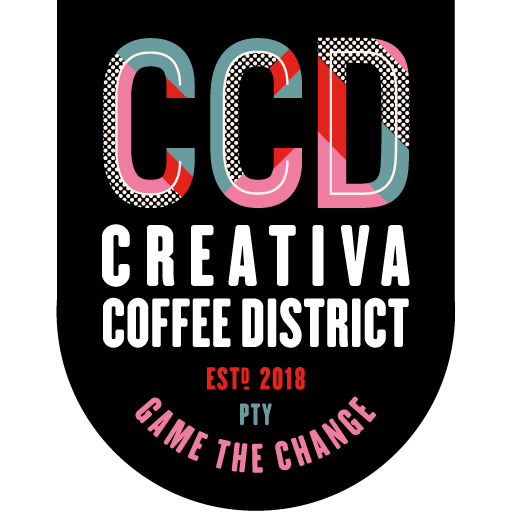Tutors

María Lucía Alemán
(Director of the CCD art program)
This second residency has allowed six young Central American artists to approach the world of specialty coffee and its practices through collaborations of transdisciplinary investigation, which resulted in a series of reflections and questions that encourage and enable the community to explore the critical views of the artists. Moreover, these generate a new dialogue concerning the necessary changes in the industry towards more equitable, humane, and sustainable practices.

Adán Vallecillo
(Tutor of artistic research)
Although I had already been a tutor in other residencies, the particular circumstances in which this program took place are unmatched. To begin with the fact that it was going to be a face-to-face residency, the initial project that required my presence – and that of the artists’ – was impossible to carry out due to the pandemic. Surprisingly, and thanks to the CCD team’s strong will and commitment, we were asked to do it in a virtual format. None of us could have guaranteed that this would work, much less that it would arouse a great interest for the open call. Fortunately, from then on, it has been a dynamic learning process, and the selected artists have been very open and generous with their exchange of knowledge. I think of the results of exchanging knowledge as experimental art, and the production of specialty coffee has opened a new universe that I would like to continue to explore.

Gerardo Díaz
(Tutor of the research of coffee processes)
At the beginning of the residency, one of the things that filled me the most with joy was the enthusiasm with which the artists listened to the stories born from coffee processing. The goal is to look at the industry from different perspectives, with new eyes that see art in a plant, a drying cherry, or a worker; at the same time, the objective is to transform that scene into a cause, turning it into their common struggle and express themselves through different disciplines in order to create an impact that will generate an echo in many hearts.
My greatest satisfaction is that we learned from each other. We exchanged passions that ultimately led to the same goals. We thought we spoke different languages, but they were all unified through art.
AREAS OF WORK
Visibility
There is a diversity of efforts and people behind the production of each cup of coffee. However, clouded by the hustle and bustle of daily life, we are often unaware of some processes that industries continue to follow and that we support through our own consumption. Who participates in the coffee production chain? What are their contributions? How are they remunerated? How are the roles distributed? In what ways do women participate in the process? These and other questions resonate throughout the works of residents Violeta Mora (Honduras) and Ana Sofía Camarga (Panama).
Corporalities
Yavheni De León (Guatemala) and Patricia Orellana (San Salvador) have developed their proposals through studying and activating elements such as weight, rotation, balance, and displacement, each from particular platforms and approaches: the first one points to human bodies, linking economic aspects of coffee with sculptural elements; the second one approaches these questions by using the body as a discursive physical axis and producer of images..
Rhizomes
From the soil to the tasting and the tasting cup back to the soil, Lulú Versari (Panama) and Arturo Beltrán (San Salvador) have incorporated into their processes the complex framework and connections of the germinal and consumption cycles of the production of specialty coffee. Both worked with clay, highlighting their nutritional qualities, aromas, and flavors, but above all, taking the senses to a both sublime and earthly level.
Artists
The first approach to the concept of the harvest. What is it? What does it imply? How does it feel? How does it look? I write down the first ideas, then look for images that allow me to visualize it and understand it from the senses, to then register the words. It implies patience, hope, accumulation; it is an act of magnetism that allows us to bring together what is dispersed. Repetition allows transformation. It is similar to memory in that way.
I identify myself as an anti-speciesist, and as such, “animals” are non-human people and the forest is a conscious organism. For my installation with CCD, I wanted the jungle and its inhabitants to be my audience; to tell them tales and myths about this plant native to another jungle and then let it be consumed by this one..
The project was born from putting the little existing accessibility to statistical data and research, in coexistence and dialogue. I question the idea of assumptions and myths as a defense to child labor in coffee-picking farms in Mexico and Guatemala. The study is based on a 2011 thesis and two documentaries that put it in evidence, however they do not coincide in the exact data of weight. Therefore, the assumption and the importance of weight play essential roles in the project.
I focus on the body and movement as a medium in multidisciplinary research, where I also use video and photography as a means to register it. In my proposal, I took up most of the elements of the Specialty Coffee Cycle in order to translate them into a sequence of movements and overlapping images.
I considered that the concept of heat was not only present in the sun-drying process on the patios and the toasting process, but also that this heat starts at the labor force that allows the artisanal process to be achieved from the beginning, until the consumer has drank their cup of coffee, the bodily heat of the labor, be it in the coffee farm sowing or harvesting, sun-drying, or selecting in order to achieve a quality cup, even the work/endeavor/effort that the barista puts in taking care of every serving detail such as water temperature, costumer service warmth…anyway, a process that is fed by a productive human chain.
By learning more about the labor force and the heat of the effort involved in manual tasks, I carried out an exercise where a portion of clay received that force when closing the hand, creating a relief, which is perceived as unique when registering a specific worker's hand. The process was visualized as a collaboration with all the workers of the mill, where each piece/portion of clay creates relief and texture, representing the hand behind the coffee's production, which ultimately makes the quality in the cup possible.
This idea of good coffee extends beyond its flavor. It also considers that which is usually seen reflected in the tasting (the work, precision, environmental conditions, etc.); what is involved in the process and not directly visible or tangible in the tasting (labor conditions, community, sustainability, equity, etc.); and the complicity of consumers’ demand for coffee (consistency, price, exclusivity, awareness, fair trade, etc.)



